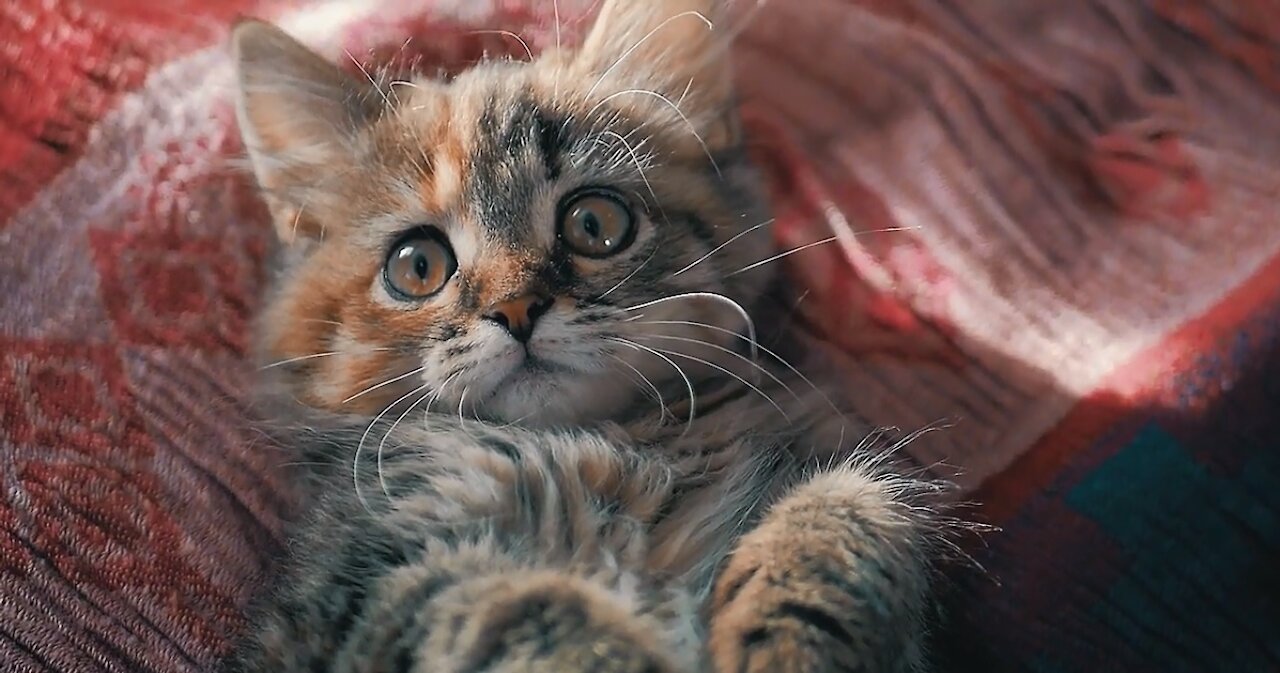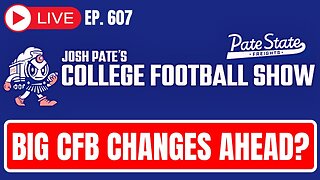Premium Only Content

The Fascinating Science of Cat 101: Understanding Cats Body Language
Cat talk and non-verbal messages are sometimes puzzling.
Cats have been regarded for centuries as mysterious, solitary, unpredictable creatures perhaps because humans have difficulty understanding what they're saying. While people rely primarily on speech to communicate, cats predominately communicate in a silent language. Cats speak by using complex combinations of body language, vocalization, and scent cues.
Learn how to recognize cat language basics, and figure out the most common combinations, to understand what your cat is saying to you and to the other pets in your family. With practice, you will soon be an expert at cat language, to the extent that you may even be able to answer back! Whether you’re a first-time cat owner or have a long-term feline friend, there will be times where you wish you could know what your cat is thinking.
Understanding Cats’ Body Language.
Sometimes you might wonder about a change in your cat’s behavior and what that could mean, or would like to know how you can tell if your cat is happy. Although cats might seem hard to read, there are lots of tell-tale signs that will give you an insight into what your companion is thinking, and what kind of mood they’re in! You’ll probably be able to tell some of your cat’s more obvious moods already from their body language, facial expressions, vocalizations, and tail movements.
But looking out for some other signals, such as the following cat tail signs and body postures, can tell you even more. Cats have a wide range of basic emotions – they feel happy, sad, afraid, relieved, and even frustrated, just like us humans! The key to a good relationship with your cat is learning how to recognize these emotions, and respond where needed.
Neutral or relaxed.
This is how your cat should spend most of their waking hours, and is a vital part of cat language – relaxed, content, and comfortable in familiar surroundings. They should look like they’re content to watch the world go by. If lying down, they could be stretched out, curled up into a ball, or lying on their front with paws neatly tucked underneath them. Their eyes might be blinking softly, or half-closed.
Focused.
They may look cute and fluffy, but from birth, your cat is designed to be an excellent hunter – they can stalk and catch prey with ease, and are capable of focusing 100% on their target. If your cat is concentrating on a small, moving object, or on something new in their immediate area, you’ll notice that their body language will change as they try to work out how to best respond to it. Their eyes will be open with pupils narrowed.
Their body might be low to the ground as they stalk, with hind legs coiled under their body. Your cat’s tail language will show focus by being held out low behind them. The end of their tail, along with their hindquarters, might be twitching as they get ready to pounce. This is one of the more obvious cat tail signs to look out for – once you see it, you’ll know they’re hunting! If the object of their focus is you, for example, if they’re trying to get food or strokes, they might rub against you with tail held in the air, but don’t be fooled – they’re still focused on their end goal!
Happy.
A happy cat is easy to recognize – you should be able to pick up their cat's body language easily. This is the state you’ll want your cat to be in as much as possible, as it’s the perfect state for quality time between you and your cat. When sitting, your cat will be relaxed and upright, with ears pointed up and forward, but relaxed, sometimes swiveling gently towards familiar sounds like your family’s voices. When lying down, they may have their paws tucked neatly underneath them, or be lying stretched out on their side or even on their back, with legs spread outwards, which shows they are very happy!
Sources: https://www.thesprucepets.com/cat-lan..., https://www.purina.co.uk/articles/cat...,
======================================================
Copyright Disclaimer:
We respect the copyright interests of the individual owners in the video and don't claim to own the original clips.
However, under Section 107 of the Copyright Act 1976, allowance is made for "fair use" for purposes such as criticism, comment, news reporting, teaching, scholarship, and research. Fair use is a use permitted by copyright statute that might otherwise be infringing. The recent amendments to the Copyright Act of 1976 pertain to music. "Fair use" remains in force for film and video.
If you want to learn to communicate directly with your cat and finally understand what they've been trying to tell you all along, and you can now tell them exactly how much they mean to you...
Just Click HERE ►►https://bit.ly/2U4wEWY
-
 1:14:02
1:14:02
Donald Trump Jr.
12 hours agoThe USAID Truman Show, Interview with Mike Benz | Triggered Ep.214
149K210 -
 1:37:34
1:37:34
Precision Rifle Network
1 day agoS4E4 Guns & Grub - You Can't Handle The Truth!
23.4K -
 56:14
56:14
Flyover Conservatives
1 day agoSick, Tired, & Foggy? The TRUTH About What’s Living in Your Gut! - Dr. Jason Dean | FOC Show
81.5K6 -
 34:24
34:24
Kimberly Guilfoyle
13 hours agoFaith, Fairness, and a Better Future: Live w/ Joy Pullmann & Elizabeth Mitchell | Ep.194
164K31 -
 1:12:20
1:12:20
Josh Pate's College Football Show
11 hours ago $6.28 earnedBig CFB Changes Coming | DeBoer Fixing Alabama | Signing Day Reaction | OhioSt vs Michigan Shift
67.7K2 -
 59:39
59:39
The StoneZONE with Roger Stone
7 hours agoEXCLUSIVE: James O'Keefe Talks to Roger Stone About Dropped Charges Against Him | The StoneZONE
55.3K4 -
 1:48:10
1:48:10
megimu32
7 hours agoON THE SUBJECT: Comedian LOSES It At Heckler!
34.8K8 -
 1:17:13
1:17:13
Redacted News
11 hours agoTRUMP IS BURNING IT ALL DOWN AND DEMOCRATS WANT HIM IMPEACHED AGAIN, USAID ROT GOES DEEP | Redacted
185K374 -
 52:23
52:23
Candace Show Podcast
11 hours agoUPDATE! Taylor Swift Goes Full Dragon Against Blake Lively | Candace Ep 144
162K267 -
 LIVE
LIVE
VOPUSARADIO
1 day agoPOLITI-SHOCK! KILL THE DEEP STATE!! PLUS: 3 SPECIAL GUESTS!
101 watching